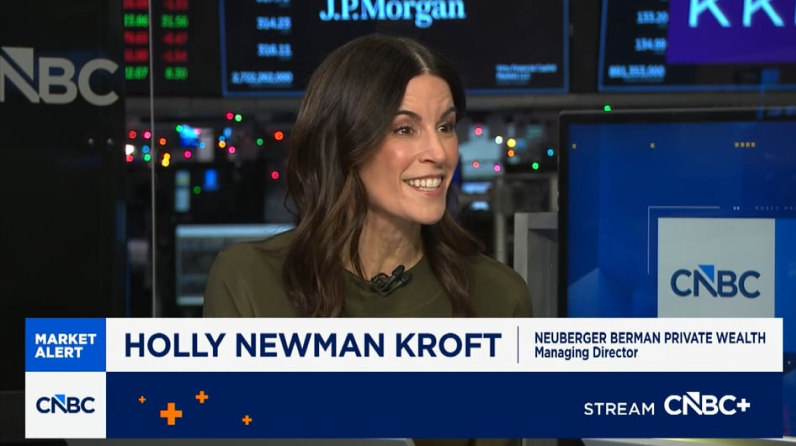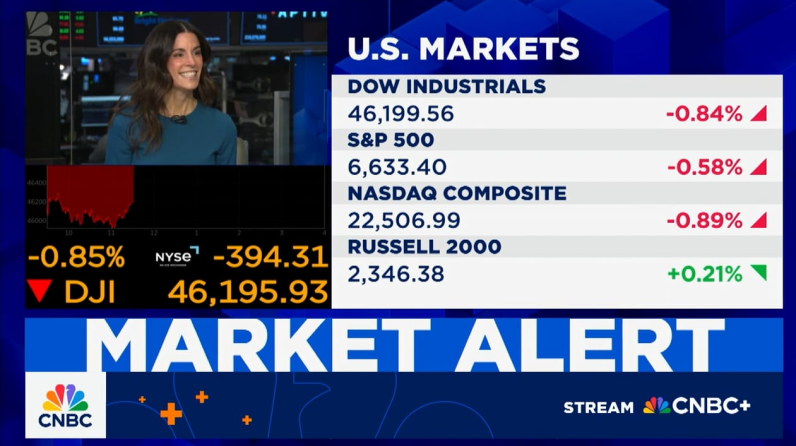

Despite missing payroll data due to the shutdown, slowing labor indicators plus cooler CPI support expectations for a 25 bps Fed rate cut next week, with additional cuts in December and early 2026 now likely.
Anticipation was high coming into today’s CPI print as the U.S. government shutdown continues to delay the release of key economic data points. Slated to be published originally on October 10th, U.S. core CPI was cooler than expected for the month of September, up +0.2% month-over-month (MoM) and up +3.0% year-over-year (YoY) versus consensus expectations for +0.3% and +3.1%, respectively. Headline CPI was lighter than consensus too, up +0.3% MoM versus the +0.4% estimate and up +3.0% YoY versus the 3.1% estimate. Headline inflation was driven in large part by the seasonal adjustment to gasoline prices, up +4.1%, while food prices grew by only +0.2% versus +0.5% in August.
Turning to core CPI, evidence of a long-awaited moderation in shelter prices was noteworthy, up only +0.2% MoM. Underlying the monthly gain was an increase in owners’ equivalent rent of only +0.1% while rents were higher by +0.2%. While still up +3.6% on a YoY basis, shelter prices are likely to continue to moderate, at least over the next several quarters, as housing inventories increase. In fact, the number of U.S. home sellers has recently exceeded home buyers for the first time since 2018. The moderation in housing costs contributed to a more benign services print overall, as services prices in aggregate grew by only +0.2% in the month. In addition to the improvement in shelter prices, motor vehicle insurance declined in the month, down -0.4% from August, while airfare inflation moderated from +5.9% in August to +2.7% in September. Services inflation moderation is helping to offset modest price increases in goods, likely attributable to the impact of tariffs. Apparel prices rose +0.7% in September up from +0.5% while furniture and bedding were up +0.9% MoM, and appliance prices were higher by +0.8%.
Today’s print does little to change expectations for the upcoming Fed meeting on October 29th. Granted, we still do not have the September non-farm payrolls report due to the shutdown, however, we believe that secondary and tertiary data point to a still slowing pace of payroll growth. Coupling that narrative with today’s inflation reading, we believe that the Fed will cut rates by 0.25% next week and likely telegraph their openness to further cuts in December and into the first quarter of 2026. Equity and fixed income performance in the early session are reflecting these expectations, with stocks higher, and the short end of the U.S. Treasury close lower.


VIDEO
The Kantor Group | Charles Kantor’s Year-End Reflections and Key Questions as We Head Into 2026

INSIGHTS
CIO Notebook: Dual Release of Delayed Non-Farm Payrolls Likely Supports Another Cut

INSIGHTS
Using Tax-Free Gifts for Wealth Transfer

INSIGHTS
CIO Notebook: Powell Plays the Middle as Fed Cuts Rates

MARKET COMMENTARY
Giving Thanks for Market Strength

INSIGHTS
CIO Notebook: September U.S. Non-Farm Payrolls Further Complicate the Narrative

VIDEO
Holly Newman Kroft Featured on CNBC’s Money Movers November 18
VIDEO
Plan for Peace of Mind with Our Estate Planning Organizer
MARKET COMMENTARY
Some Tricks, More Treats
INSIGHTS
CIO Notebook: Markets Rattled as Fed Leans Hawkish
REPLAY
Private Wealth Investment Outlook 4Q25
INSIGHTS
CIO Notebook: September Core CPI Comes in Late but Light
INSIGHTS
Charitable Fundraising: Moving Beyond Cash
IMPORTANT INFORMATION:
This material is provided for informational purposes only and nothing herein constitutes investment, legal, accounting or tax advice, or a recommendation to buy, sell or hold a security. This material is general in nature and is not directed to any category of investors and should not be regarded as individualized, a recommendation, investment advice or a suggestion to engage in or refrain from any investment-related course of action. Any views or opinions expressed may not reflect those of the firm as a whole. Neuberger Berman products and services may not be available in all jurisdictions or to all client types. Diversification does not guarantee profit or protect against loss in declining markets. Investing entails risks, including possible loss of principal. Investments in private equity are speculative and involve a higher degree of risk than more traditional investments. Investments in private equity are intended for sophisticated investors only. Unless otherwise indicated, returns shown reflect reinvestment of dividends and distributions. Indexes are unmanaged and are not available for direct investment. Investing entails risks, including possible loss of principal. Past performance is no guarantee of future results.
Portfolio positioning views expressed herein are those of Neuberger Berman’s Private Wealth Investment Group, which may include those of the Neuberger Berman’s Asset Allocation Committee. Asset allocation and positioning views are based on a hypothetical reference portfolio. The Private Wealth Investment Group analyzes market and economic indicators to develop asset allocation strategies. The Private Wealth Investment Group works in partnership with the Office of the CIO. The Private Wealth Investment Group also consults regularly with portfolio managers and investment officers across the firm. The Asset Allocation Committee is comprised of professionals across multiple disciplines, including equity and fixed income strategists and portfolio managers. The Asset Allocation Committee reviews and sets long-term asset allocation models, establishes preferred near-term tactical asset class allocations and, upon request, reviews asset allocations for large, diversified mandates. Asset Allocation Committee members are polled on asset classes and the positional views are representative of an Asset Allocation Committee consensus. The views of the Asset Allocation Committee and the Private Wealth Investment Group may not reflect the views of the firm as a whole and Neuberger Berman advisers and portfolio managers may take contrary positions to the views of the Asset Allocation Committee or the Private Wealth Investment Group. The Asset Allocation Committee and the Private Wealth Investment Group views do not constitute a prediction or projection of future events or future market behavior. Defensive positioning generally means an underweight bias on allocations to risk assets such as equities and alternatives. Positioning views may change over time without notice and actual client positioning may vary significantly. Discussion of yield characteristics or total returns of different asset classes are for illustrative purposes only. Such asset classes, such as equities and fixed income, may have significantly different overall risk-return characteristics which should be consider before investing.
The information in this material may contain projections, market outlooks or other forward-looking statements regarding future events, including economic, asset class and market outlooks or expectations, and is only current as of the date indicated. There is no assurance that such events, outlook and expectations will be achieved, and actual results may be significantly different than that shown here. The duration and characteristics of past market/economic cycles and market behavior, including any bull/bear markets, is no indication of the duration and characteristics of any current or future be market/economic cycles or behavior. Information on historical observations about asset or sub-asset classes is not intended to represent or predict future events. Historical trends do not imply, forecast or guarantee future results. Information is based on current views and market conditions, which will fluctuate and may be superseded by subsequent market events or for other reasons.
Discussions of any specific sectors and companies are for informational purposes only. This material is not intended as a formal research report and should not be relied upon as a basis for making an investment decision. The firm, its employees and advisory accounts may hold positions of any companies discussed. Nothing herein constitutes a recommendation to buy, sell or hold a security. It should not be assumed that any investments in securities, companies, sectors or markets identified and described were or will be profitable. Investment decisions and the appropriateness of this content should be made based on an investor's individual objectives and circumstances and in consultation with his or her advisors.
Neuberger Berman Investment Advisers LLC is a registered investment adviser.
The “Neuberger Berman” name and logo are registered service marks of Neuberger Berman Group LLC.